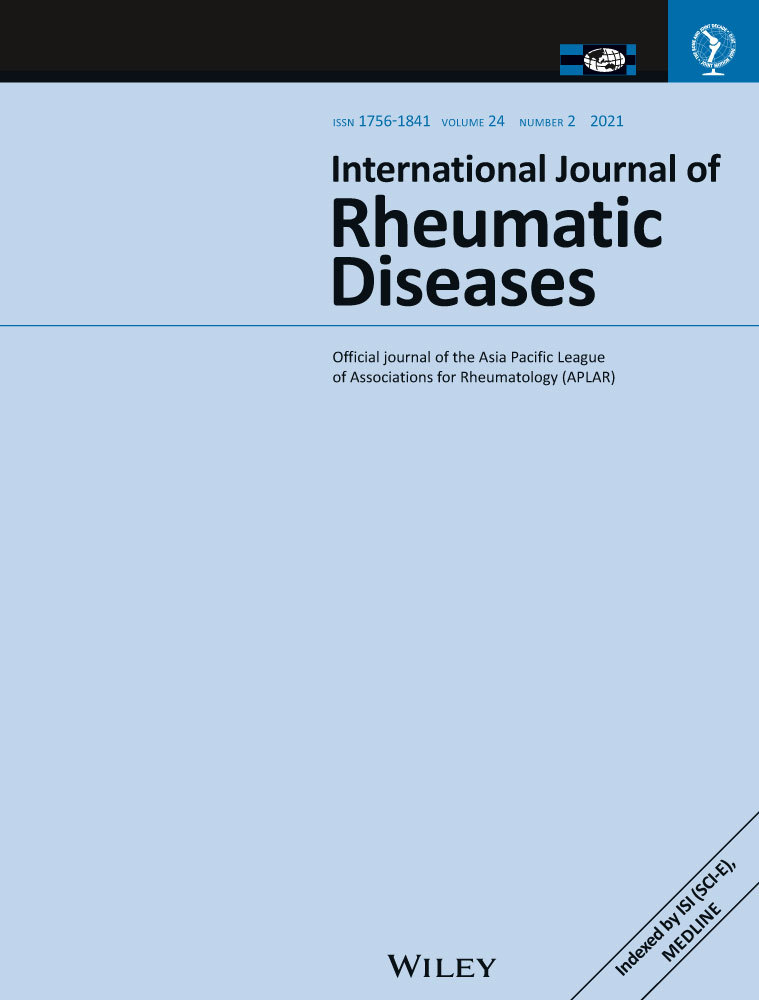Risk factors for cancer-associated myositis: A large-scale multicenter cohort study
Abstract
Aim
The aim of this study was to identify the risk factors and prognosis of patients with cancer-associated myositis (CAM).
Method
Four hundred and eighty-seven patients with dermatomyositis (DM), clinical amyopathic dermatomyositis (CADM) and polymyositis (PM) from 3 clinical centers were enrolled retrospectively in this study. Clinical and laboratory data of CAM and non-CAM patients were compared. Logistic regression analysis was used to identify risk factors of CAM.
Results
Out of the 487 patients with DM/CADM/PM, 7.0% (34/487) of patients were classified as CAM. Older age (53.91 ± 13.32 vs. 48.76 ± 14.34 years), heliotrope rash (61.8% vs. 41.9%), shawl sign (41.2% vs. 22.1%), V sign (58.8% vs. 38.6%) were observed significantly more commonly in patients with CAM than those without CAM (all P < .05). Fever (17.7% vs. 37.8%), arthralgia/arthritis (23.5% vs. 45.7%), interstitial lung disease (ILD, 38.2% vs 68.9%) were significantly less common in the CAM group than the non-CAM group. Age at onset (odds ratio [OR] 1.036, 95% CI 1.001-1.072, P = .042), shawl sign (OR 2.748, 95% CI 1.107-6.822, P = .029), anti-transition initiation factor (TIF)-1γ antibody (OR 4.012, 95% CI 1.268-12.687, P = .018) were identified as the initial risk factors for the onset of CAM, and ILD was identified as a protective factor for CAM (OR 0.292, 95% CI 0.115-0.739, P = .009). All-cause mortality was significantly higher in CAM patients compared with non-CAM patients (P = .001).
Conclusion
The mortality of patients with CAM was higher than DM/CADM/PM patients without cancer. Malignancy should be screened in DM/CADM/PM patients especially with risk factors, including older age, shawl sign, anti-TIF-1γ antibody, and lack of ILD.
CONFLICT OF INTEREST
The authors have declared no conflicts of interest.




